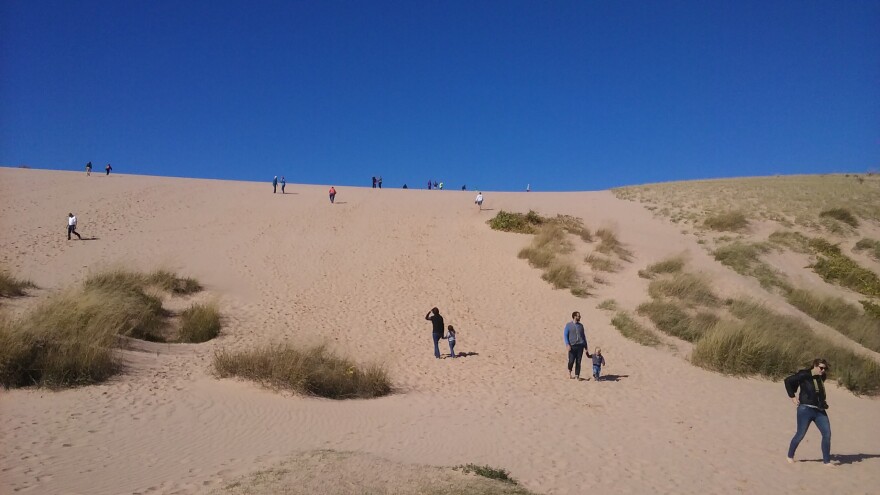The park’s name comes from the Native American legend of a mother bear who swims from Wisconsin to escape a forest fire.
Marie Scott, a park ranger and interpreter who has worked at Sleeping Bear on and off since the 1970’s, says the park was preserved by joining existing state parks together with private land to retain public access to the so called “Third Coast.”
“At the time more and more development was happening along the shoreline,” she recalls. “Access was decreasing along the shoreline so people needed a place to connect with nature.”
The park area covers a 35- mile long stretch of Lake Michigan’s eastern coastline as well as North and South Manitou Islands. Chief of Natural Resources, Kevin Skerl, says Sleeping Bear is now one of the most accessible parks in the country.
“You can actually come here, get in your car, and on a short drive go and see things that in other National Parks you might have to hike miles and miles to see,” says Skerl
In 2012, viewers of ABC’s “Good Morning America” voted Sleeping Bear Dunes National Lakeshore as the most beautiful place in America. So far this year, almost 1.4 million visitors have experienced the park.
However, popularity may be taking a toll. Rangers say they can see a saddling effect at the top of the popular Dune Climb. A researcher team will be studying the erosion there in the coming year.

